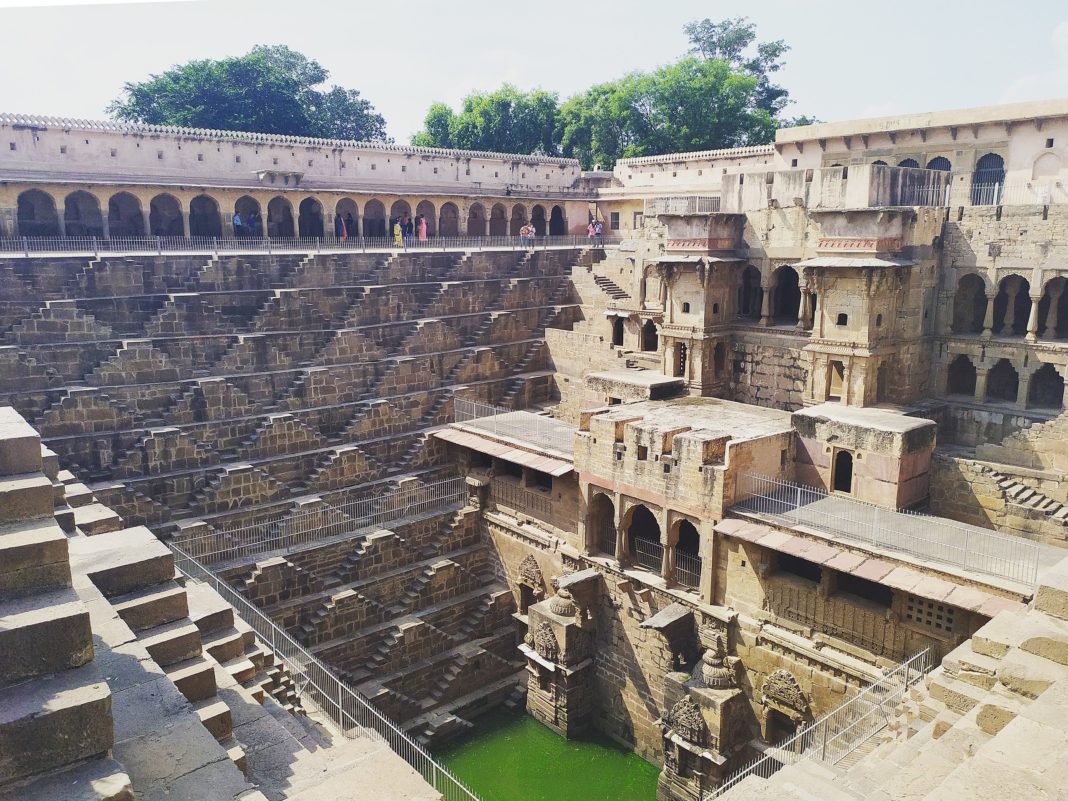Chand Baori is a stepwell situated in the village of Abhaneri in the Indian state of Rajasthan. Stepwells are built with steps on the side which allows people to easily reach the water below. Chand Baori is shaped like a square, measuring 13 stories, and is approximately 30 meters deep. The stair groupings looked like small pyramids.
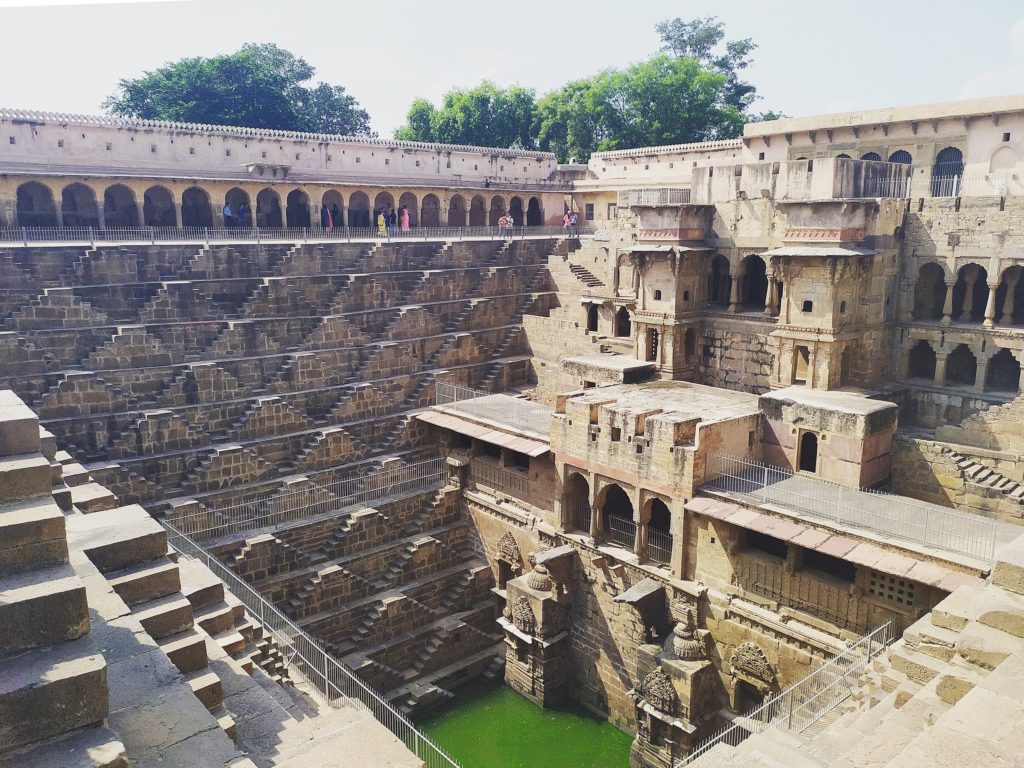
The oldest parts of the step-well date from the 8th century onwards, An upper palace building was added to the site, which is viewed from the tabulated arches used by the Chauhan rulers and the cusped arches used by the Mughals. Access to these rooms is now blocked for tourists. The upper stories with the columned arcade around it were built around the 18th century during the Mughal era. The Mughals also added art galleries and a retaining wall around the well. Today, there are remains of old sculptures and carvings, which were suggested to be in the temple or in the various rooms.
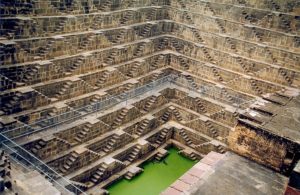
Chand Baori is a deep four-sided well with a large temple on the back face of the building. The basic architectural aspects of the monumental well consist of a long corridor of steps leading to five or six stories below ground level which can be seen at the site.
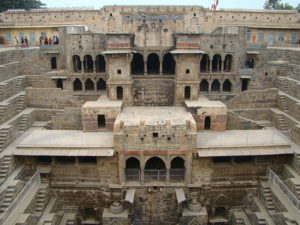
Chand Baori consists of 3,500 narrow steps over 13 stories. It extends approximately 30 m into the ground, making it one of the deepest and largest stepwells in India.
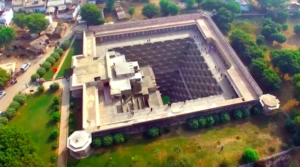
At the bottom of the well, the air remains 5-6°C cooler than at the surface, and Chand Baori was used as a community gathering place for locals during periods of intense heat. One side of the well has a haveli pavilion and resting room for the royals.
According to Wikipedia; chandbaori.org; historydaily





